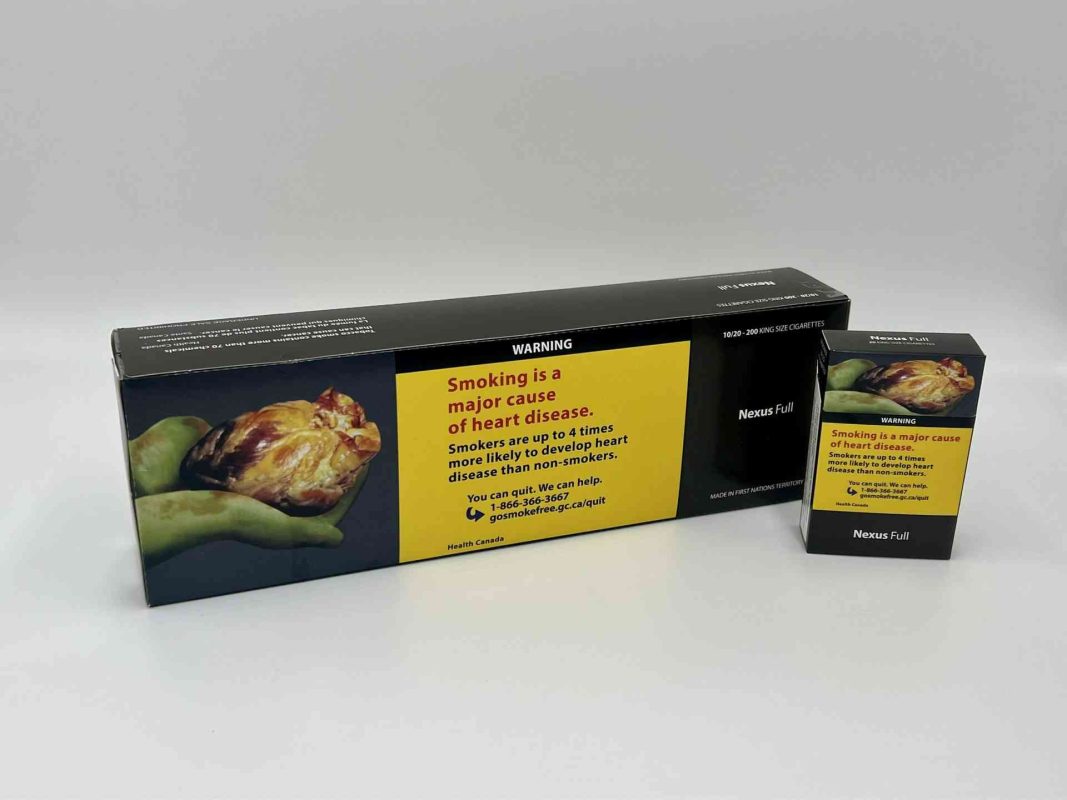Frequently Asked Questions
How much is a carton of cigarettes in Canada
Understanding How much is a carton of cigarettes in Canada?
If you’re a smoker or simply curious about the cost of cigarettes in Canada, you might be wondering how much a carton of cigarettes costs. The price can vary significantly depending on the brand and the province. In this blog, we’ll explore the factors that influence cigarette prices, provide a general overview of current costs, and consider the implications of these prices on public health and consumer behavior.
Cigarette Types in Canada
- Canadian Classics
- Playfare’s Cigarettes
- Elite Cigarettes
- BB Cigarettes
- DK’s Cigarettes
- Canadian Goose
- Nexus Cigarettes
- Nexx Cigarettes
- Discount Cigarettes
- Rolled Gold
- Cigarettes Rollies
- Putters Cigarettes
Factors Influencing the Cost of Cigarettes in Canada
Several factors contribute to the cost of cigarettes in Canada, including:
- Taxes: Federal and provincial taxes play a significant role in determining the price of cigarettes. These taxes are imposed to discourage smoking and fund public health initiatives. Excise taxes, sales taxes, and other levies can add substantially to the base price of tobacco products.
- Brand and Quality: The brand and quality of cigarettes also impact their price. Premium brands are generally more expensive than generic or lesser-known brands. Packaging, marketing, and production costs contribute to this price differentiation.
- Location: Prices can vary significantly across provinces and territories due to differing tax rates and regulations. For instance, provinces with higher tobacco taxes will naturally have higher prices for cigarettes.
Average Cost of a Carton of Cigarettes
As of 2024, the cost of a carton of cigarettes in Canada can vary widely depending on the province and brand. On average, a carton contains 200 cigarettes (10 packs of 20 cigarettes each). Here’s a general breakdown of the average cost across a few provinces:
- Ontario: Approximately CAD 110 – CAD 140 per carton
- British Columbia: Approximately CAD 120 – CAD 150 per carton
- Alberta: Approximately CAD 100 – CAD 130 per carton
- Quebec: Approximately CAD 90 – CAD 120 per carton
- Newfoundland and Labrador: Approximately CAD 120 – CAD 150 per carton
These prices are indicative and can fluctuate based on changes in tax policies, brand pricing strategies, and regional regulations.
The Impact of High Cigarette Prices
The high cost of cigarettes in Canada is part of a broader strategy to reduce smoking rates and promote public health. Here are some implications of these pricing policies:
- Reduced Smoking Rates: Higher prices are a deterrent, especially for younger individuals and those with lower incomes. Studies have shown that increased tobacco prices lead to lower smoking rates.
- Public Health Benefits: Decreased smoking rates result in fewer smoking-related illnesses, reducing the burden on the healthcare system. This translates to long-term savings for public health infrastructure.
- Economic Considerations: While higher prices can reduce consumption, they also contribute to government revenue through taxes. These funds are often redirected toward health programs, education, and smoking cessation initiatives.
Alternatives and Illicit Market Concerns
The high cost of legal cigarettes has led some consumers to seek cheaper alternatives, including illicit tobacco products. The illicit tobacco market poses significant challenges, including lost tax revenue for governments and health risks due to unregulated products. Law enforcement agencies continue to combat this issue through stringent measures and public awareness campaigns.
Effects of smoking in Canada
Smoking has a range of harmful effects, and its impact is a significant public health concern in Canada. The country has implemented various measures to reduce smoking rates, but it still poses risks to individual and societal health. Here are some key effects of smoking in Canada:
1. Health Effects on Individuals
- Smoking causes lung disease, including chronic obstructive pulmonary disease (COPD), emphysema, and chronic bronchitis. It increases the risk of asthma and other respiratory conditions.
- It remains the leading cause of preventable cancers, such as lung, throat, mouth, bladder, and pancreas cancers. Around 85% of lung cancer cases in Canada directly result from smoking.
- Smoking triggers heart attacks, strokes, and other cardiovascular diseases by damaging blood vessels and raising blood pressure.
- Smokers weaken their immune systems, making them more vulnerable to infections like pneumonia and flu.
- On average, smokers lose 10 years of life compared to non-smokers.
2. Impact on Secondhand Smokers
- Secondhand smoke affects non-smokers, causing similar health problems like lung cancer, heart disease, and respiratory issues. Children and the elderly, in particular, suffer from increased risks.
- Pregnant women exposed to secondhand smoke increase the likelihood of giving birth to babies with low birth weight, birth defects, or premature deliveries.
3. Social and Economic Effects
- Smoking-related illnesses drive up healthcare costs in Canada, with the government spending over CAD 6 billion annually on treatment, hospitalizations, and medications.
- Smoking-related deaths and illnesses reduce workplace productivity, costing billions more due to absenteeism, disability, and premature death.
- Smokers contribute to environmental pollution, with cigarette butts being a significant form of litter, and cigarette smoke polluting the air with harmful chemicals.
4. Youth Smoking and Vaping
- Although youth smoking rates have dropped, vaping has gained popularity among young Canadians, leading to concerns over nicotine addiction. Vaping may encourage traditional tobacco use.
- Canadian authorities restrict the sale of vaping products and limit advertising to prevent youth from starting.
5. Public Health Initiatives and Smoking Rates
- Aggressive public health campaigns, tobacco taxes, and smoking bans have successfully reduced smoking rates in Canada.
- In 2021, only about 10% of Canadians aged 12 and older smoked, down from 25% in the early 2000s.
- The Canadian government aims to bring smoking rates below 5% by 2035, using education, smoking cessation programs, and tighter regulations.
6. Smoking Cessation
- Smoking cessation programs help individuals quit through counseling, nicotine replacement therapies (NRTs), and medications like varenicline and bupropion.
- Provincial healthcare systems offer subsidies for these programs, recognizing the long-term benefits of fewer smoking-related diseases.
7. Indigenous Communities
- Smoking rates in Indigenous communities remain higher, with factors like historical trauma and socioeconomic challenges contributing to this disparity. Efforts to reduce smoking in these populations require culturally sensitive approaches, including the ceremonial use of tobacco.
Frequently Asked Questions
1. How many packs are in a carton of cigarettes in Canada?
A standard carton of cigarettes in Canada typically contains 10 packs, with each pack holding 20 cigarettes. This means a carton usually contains a total of 200 cigarettes
2. Are there any restrictions on bringing cigarettes into Canada?
Yes, there are regulations regarding the quantity of tobacco products you can bring into Canada for personal use. Generally, you can bring up to 200 cigarettes (one carton) without paying duty
3. Is it cheaper to buy cigarettes by the carton?
Yes, purchasing cigarettes by the carton is generally more cost-effective than buying individual packs. Retailers often offer discounts for bulk purchases, which can lead to significant savings over time
4. Where can I buy cigarette cartons in Canada?
Cigarette cartons are widely available at convenience stores, supermarkets, and online retailers. Each of these options may offer different prices and promotions, so it’s worth comparing before making a purchase. If you're looking to buy a carton of cigarettes online then you should order them from the tobacco-canada.com website.
5. Why are cigarette prices so high in Canada?
The high cost of cigarettes in Canada is largely due to the heavy taxation imposed by both federal and provincial governments. These taxes are intended to discourage smoking and cover healthcare costs associated with tobacco use
Conclusion
The cost of a carton of cigarettes in Canada reflects a combination of taxes, brand pricing, and regional differences. While these prices are among the highest globally, they serve a critical role in promoting public health and reducing smoking rates. As policies evolve and smoking trends change, the economic landscape of tobacco in Canada will continue to adapt. For smokers, understanding the cost implications can be an essential factor in making informed choices about their habits.


